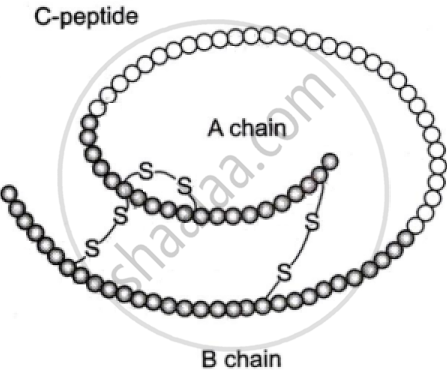Advertisements
Advertisements
प्रश्न
How was Insulin obtained before the advent of rDNA technology? What were the problems encountered?
उत्तर
Conventionally, Insulin was isolated and refined from the pancreas of pigs and cows to treat diabetic patients. Though it is effective, due to minor structural changes, the animal insulin caused allergic reaction in a few patients.
APPEARS IN
संबंधित प्रश्न
Write the function of adenosine deaminase enzyme.
Suggest any two possible treatments that can be given to a patient exhibiting adenosine deaminase deficiency.
Compare and contrast the advantages of production of genetically modified crops.
Explain how insulin can be produced using recombinant DNA technology.
Why does Bt toxin not kill the bacterium that produces it, but kill the insect that ingests it?
Describe the steps that are followed during secondary treatment of sewage.
Describe the role of high temperature.
The first clinical gene therapy was done for the treatment of ________.
How many amino acids are arranged in the two chains of Insulin?
Vaccines that use components of a pathogenic organism rather than the whole organism are called ____________.
Explain how “Rosie” is different from a normal cow.
Which of the following is a neuropeptide hormone?
A pathophysiology is the ______.
Due to which of the following reasons insulin extracted from pancreas of slaughtered animals cannot be used in humans to treat diabetes?
ELISA is based on:
Now a days it is possible to detect the mutated gene causing cancer by allowing a radioactive probe to hybridize its complimentary DNA in a clone of cells, followed by its detection using autoradiography because ______
With regard to insulin choose the correct options.
- C-peptide is not present in mature insulin.
- The insulin produced by rDNA technology has C-peptide.
- The pro-insulin has C-peptide.
- A-peptide and B-peptide of insulin are interconnected by disulphide bridges.
Choose the correct answer from the options given below.
For effective treatment of the disease, early diagnosis and understanding of its pathophysiology is very important. Which of the following molecular diagnostic techniques is very useful for early detection?
The Adenosine deaminase deficiency results in ______.
Discuss briefly how a probe is used in molecular diagnostics.
A cell-free method of amplifying DNA first developed in the mid 1980's revolutionised the field of biotechnology, Name the method and explain the basic steps of the technique involved.
Eli Lilly's contribution for diabetic patients through r-DNA technology has been overwhelmingly accepted. Explain how?
- Assertion: PCR is a powerful technique to identify genetic disorders.
- Reason: PCR can detect mutations in low amounts of DNA.
In humans, somatic gene therapy was carried out to correct an immunodeficiency disease. Name this disease.
Give a reason for the following:
Streptokinase is administered to the patients having myocardial infarction.
The diagram given below represents the schematic structure of proinsulin, which undergoes certain modifications before it becomes a fully functional insulin.
Study the diagram carefully and answer the questions that follow:

- State the change the proinsulin undergoes to become fully functional.
- Name the modern scientific technique used for the production of human insulin.
- How are the two polypeptide chains of the fully functional insulin held together?
Illustrate using any one example of transgenic bacteria.
